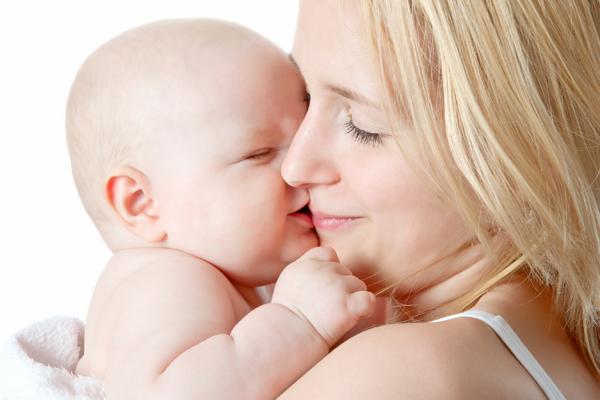Breast-Fed Babies Show Buildup of Potentially Harmful Chemical

Scientists have found that a widespread and potentially harmful class of industrial chemicals accumulates easily in human breast milk and can build up to worrying levels in infants who are breast-fed.
The chemicals, called perfluorinated alkylate substances (PFASs), are largely unregulated and are used in stainproof textiles, waterproof clothing, paints and some food packaging. Recently, independent studies have found that PFASs can cause cancer and interfere with the immune and reproductive systems in laboratory animals.
When PFASs enter into the environment, they attach to proteins in animals and can "bioaccumulate" up the food chain, meaning that animals at the top of the food chain, such as humans and large fish, can build up high levels in their bodies. For human infants, protein-rich breast milk appears to be the major source of PFAS exposure.
In the new study, scientists at the Harvard T.H. Chan School of Public Health in Boston and Danish institutions found that in children exclusively breast-fed, PFAS concentrations in their blood increased by about 20 to 30 percent each month.
Children who were partially breast-fed also had significant, but lower, increases in PFAS levels over time, the researchers also found. In some cases, by the end of breast-feeding, children's blood levels of PFASs exceeded that of their mothers'.
The scientists stressed, however, that breast milk is still the healthiest food for infants, and they encouraged mothers to breast-feed. They see their findings, published today (Aug. 20) in the journal Environmental Science & Technology, as a wake-up call to governments to better regulate PFASs. [12 Worst Hormone-Disrupting Chemicals & Their Health Effects]
The study included 81 children born in the Faroe Islands, a nation in the North Atlantic, situated about midway between Norway and Iceland. Most of the PFAS exposure in the Faroes comes from seafood.
Get the world’s most fascinating discoveries delivered straight to your inbox.
New mothers in North America have levels of PFASs in their breast milk similar to those of mothers in the Faroes, said Dr. Philippe Grandjean of Harvard, who co-led the study.
Many countries, including the United States, have sharply limited the use of two types of PFASs — perfluorooctanoic acid (PFOA) and perfluorooctane sulfonate (PFOS), because of evidence suggesting that these compounds may cause cancer and disrupt hormones. Now, studies are revealing that other PFASs can also be harmful to humans, Grandjean said.
"So far, all we have to go by is the EPA provisional limit for PFOA and PFOS in drinking water, and they are most likely more than 100-fold too high to protect children against adverse effects," Grandjean told Live Science.
Some of the researchers who worked on the new study, including Grandjean, previously found that the PFAS exposure in the same group of Faroe Island children was associated with a deficient response to routine vaccinations, suggesting that these children had compromised immune systems. Grandjean said that these children's PFAS blood concentrations would be deemed "safe" by U.S. Environmental Protection Agency standards.
The EPA did not respond to Live Science's request for comment on the new study. In January 2015, the agency proposed that any company that intends to use perfluorinated chemicals such as PFASs should notify the agency, so that it can evaluate the use and, if necessary, take action to prohibit or limit the activity.
The agency's website says, "EPA believes that the chemical similarity between PFOS and PFAS raises the likelihood that health and environmental concerns are present for PFAS."
Grandjean noted that there are ways for mothers to limit their exposure to PFASs while still enjoying nutritious seafood, such as by eating sardines and other small fish that haven't accumulated harmful chemicals. He also said that people should be aware of PFAS levels in their local drinking water, which can fluctuate. In some states, such as Ohio and West Virginia, the PFAS levels are high at times, and this water shouldn't be used in mixing baby formula from powder, Grandjean said.
The new study also showed that the babies' levels of PFASs slowly decreased after they stopped breast-feeding. But this might not be the case for American children, Grandjean said, if new exposure comes through PFAS-containing rain gear, carpets and other textiles common in the Unites States.
Other members of the science team are from the University of Copenhagen, the University of Southern Denmark and the Faroese Hospital System.
Follow Christopher Wanjek @wanjek for daily tweets on health and science with a humorous edge. Wanjek is the author of "Food at Work" and "Bad Medicine." His column, Bad Medicine, appears regularly on Live Science.

Christopher Wanjek is a Live Science contributor and a health and science writer. He is the author of three science books: Spacefarers (2020), Food at Work (2005) and Bad Medicine (2003). His "Food at Work" book and project, concerning workers' health, safety and productivity, was commissioned by the U.N.'s International Labor Organization. For Live Science, Christopher covers public health, nutrition and biology, and he has written extensively for The Washington Post and Sky & Telescope among others, as well as for the NASA Goddard Space Flight Center, where he was a senior writer. Christopher holds a Master of Health degree from Harvard School of Public Health and a degree in journalism from Temple University.


